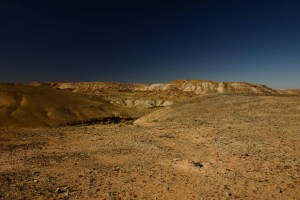One problem, two solutions, and three questions.
The problem is not new, the solutions are among many, the questions express my plagiodoxic view of the relationship between symmetry and orderliness.
The problem- 12 coins
Given:
Twelve coins identical in every respect except that one coin weighs slightly more of less than the others.
A beam balance.
To find:
The aforementioned coin, hereafter called the object coin, and whether it is lighter or heavier.
First solution:
Put 6 coins in each pan of the balance.
Weighing #1 One side goes up, the other down. Denote the coins L (light) or H(heavy) accordingly.
Take the 6 coins from either side, L or H, and put three in each pan.
Weighing #2 Either the coins balance or not.
If they balance, you know they are all correct, so however they are denoted, the object coin is the opposite denotation, either L or H. Set the correct coins aside and take up the other six coins, which are denoted all either H or L.
Put three of these coins in each pan of the balance.
Weighing #3
One side goes up, the other side down. All of these coins are denoted the same, either L or H. The movement of the pan containing the object coin will be consistent with its denotation, either up for L or down for H.
The movement of the other pan will be opposite the denotation of the coins in it, indicating that they are correct, neither light nor heavy. At this point you know that the object coin is one of the three that are left, and that it is heavy or light, according to its denotation.
Put one of the coins in each pan.
Weighing #4
The pans may balance, in which case the object coin is the one left out of this weighing. It is heavier or lighter according to its denotation.
The pans may not balance, in which case the object coin is the one that moved consistent with its denotation, up (L) or down (H).
You have isolated the incorrect coin and determined whether it was heavy or light with four weightings.
The second solution:
Put 4 coins in each pan of the balance, leaving 4 coins aside.
Weighing # 1
I If the pans balance, the object coin is among the set aside 4, and is either H or L. Denote all 8 of the coins you have weighed c (correct). Set them aside and take up the 4 unknown coins.
Weighing # 2
Put 2 of the unknown coins in one pan of the balance. Put a third unknown coin in the other pan, together with 1 correct coin.
Ia If the pan balances, the object coin is the remaining coin not yet weighed. Put it in one pan, and a correct coin in the other pan.
Weighing #3(Ia) If the object coin goes up, its L, down its H.
You found it with only three weighings.
Ib If the pans do not balance, the object coin is one of these three. Two of them are in one pan, the third is in the other pan with a correct coin. Denote them H or L according to how its pan moved.
Take the two coins that are together, put one in each pan of the balance.
Weighing #3(Ib)
If the pans balance, the object coin is the third coin, and it is light or heavy according to its denotation in weighing #2
If the pans do not balance, then the object coin is the one of these two that moved according to its denotation in weighing #2.
You have found the object coin in three weighings.
II If the pans do not balance
One side goes up, the other down. Denote the coins accordingly, H, L, or c-the 4 unweighed coins must be correct. It will help in the following if you also number the coins like this:
H1, H2, H3, H4, L5, L6, L7, L8. In this first weighing (of the second solution), you have determined that four coins are correct, four coins are not heavy- denoted L, and four coins are not light- denoted H.
Put coins H1 and H2 in one pan, and put H3 in the other pan. Put L5 in the pan with H1 and H2. Put L6 and correct coin in the pan with H3. In the balance pans, you have
H1-H2-L5 vs H3-L6-c
Weighing #2 One of three things can happen. The pans balance, the H1-H2-L5 pan goes up, or the H1-H2-L5 pan goes down.
IIa If the pans balance, the object coin must be one of the un-weighed coins, either H4, L7 or L8. Weighing #3 Put L7 in one pan, L8 in the other. If they balance, the object coin is H4-heavy. If they do not balance, the object coin is whichever of the two, L7 or L8, goes UP.
You have found the coin in three weighings.
IIb If the pan with H1-H2-L5 goes up, the object coin cannot be H1, H2, or L6- they moved opposite there denotation. Neither can it be H4, L7 or L8, which were not weighed. That leaves H3 and L5. Put either one in one pan and a correct coin in the other. If the pan moves according to the denotation of the coin, that is the object coin. Otherwise it is the other one.
You have found the object coin in three weighings.
IIc The pan H1-H2-L5 goes down.
The object coin must be H1, H2, or L6. Put H1 in one pan, H2 in the other:
Balance means the object coin is L6, and is light.
Not balance means the coin that goes down is the object coin and is heavy.
You have found the coin in three weighings.
Thanks for bearing with me thus far. It’s a bit of a slog, and I may have goofed it up somewhere.
Summing up, the first solution found the object coin in four weighings. The second solution found the object coin in three weighings. Parenthetically, if you “knew” which coin was the object coin, it would take you two weighings to prove it.
.
The first solution is simpler to understand and follow. The second solution packs more information into each weighing.
Now for the questions.
Symmetry and Orderliness
The first solution begins by dividing the coins in half. The second solution divides the coins in thirds. Which of these two solutions to the problem would you say involves a higher level of symmetry?
As each process unfolds, less information is gained at each weighing in the first process, more in the second process. Which would you say is the more orderly process?
What can you say about the relation of symmetry and orderliness on the basis of your answers to these two questions?
Thank you for your attention.
GDT



